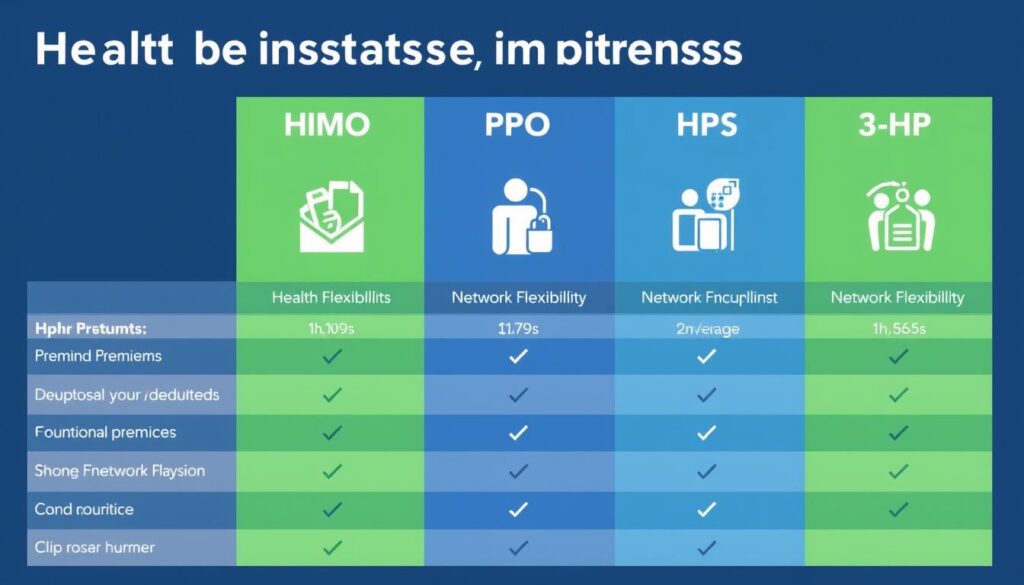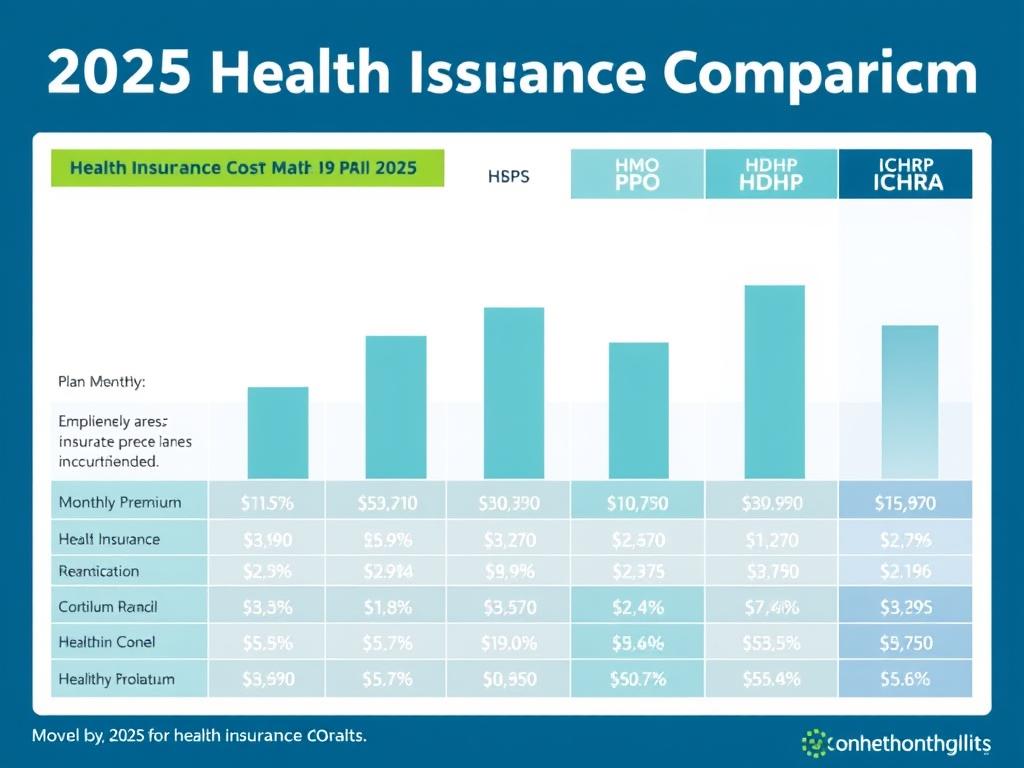Save time, money, and headaches — this guide walks you through practical options, real-world tips, and the trade-offs to expect so you can give your employees solid health benefits without breaking the bank.
Why Offering Health Insurance Is a Smart Investment (Even on a Budget)
- Why Offering Health Insurance Is a Smart Investment (Even on a Budget)
- Understanding Your Options: Types of Affordable Employee Health Insurance
- Breaking Down the Costs: What to Expect in 2025
- 7 Proven Strategies to Secure the Cheapest Employee Health Insurance
- How to Choose the Right Affordable Plan: A Step-by-Step Guide
- Special Considerations for Very Small Businesses
- Future Trends in Affordable Employee Health Insurance
- Frequently Asked Questions About Affordable Employee Health Insurance
- Conclusion: Balancing Affordability and Quality
Before we dive into the cheapest options, let’s answer the big question: is offering health insurance worth it for your small business? Short answer: yes — and not just for the warm fuzzy feelings.
Attracting & Retaining Top Talent
Health benefits are table stakes these days. Many job seekers list health insurance as a top perk when comparing employers, so even an affordable health insurance plan can make your openings more competitive.
Plus, teams with coverage tend to stick around longer — which means lower turnover costs and more institutional know-how staying put.
Boosting Productivity & Morale
When employees aren’t worried about medical bills, they show up more focused. Access to care means fewer sick days and more preventive visits, which can prevent small issues from turning into big, expensive problems.
That peace of mind translates to better morale, and honestly, happier people do better work.
Tax Advantages You Shouldn’t Ignore
There are real tax perks to offering employee health benefits. Premiums paid by businesses are generally tax-deductible as a business expense, and some small employers may qualify for the Small Business Health Care Tax Credit — which can cover a sizable chunk of premium costs if you meet the rules.
- Quick tip: If you have fewer than 25 full-time employees and meet the average wage test, you might qualify — talk to your CPA to be sure.
Ready to explore your options?
See quotes in minutes — free. Compare cheap health insurance plans and chat with licensed agents who specialize in small business benefits.
Understanding Your Options: Types of Affordable Employee Health Insurance
When you’re hunting for the cheapest employee health insurance, knowing the main plan types makes the search way less painful. Each option has trade-offs in cost, coverage, and network access — so pick what fits your team’s needs.

Traditional Group Health Plans: Finding the Sweet Spot
Health Maintenance Organization (HMO)
Average Cost: Generally lower premiums among traditional group plans.
Best For: Small businesses with employees in the same area who want predictable costs and lower out-of-pocket spend.
- Pros: Lower premiums, lower out-of-pocket costs, good for concentrated teams.
- Cons: Needs a primary care provider, referrals for specialists, limited to in-network providers.
- Quick note: Great if your workforce uses a local network and values cost predictability.
Preferred Provider Organization (PPO)
Average Cost: Higher premiums but more flexibility in provider choice.
Best For: Businesses with employees who travel, live in different regions, or want broader networks.
- Pros: No PCP required, no referrals, out-of-network coverage available.
- Cons: Higher premiums and often higher cost-sharing.
- Quick note: Pick a PPO if access to many providers is a must for your team.
High-Deductible Health Plan (HDHP)
Average Cost: Often the lowest premiums overall when paired with an HSA.
Best For: Young, healthy employees or teams that want lower monthly costs and tax-advantaged savings.
- Pros: Lower monthly premiums, HSA tax benefits, good for cost-conscious employers.
- Cons: Higher deductibles and more out-of-pocket spending until the deductible is met.
- Quick note: Works well if your employees are comfortable with some upfront costs in exchange for lower premiums.
The Secret Weapon: Health Reimbursement Arrangements (HRAs)
Not into one-size-fits-all group health? HRAs let you fund employee health coverage on your terms. They can be one of the most flexible and cost-controlled health insurance solutions for small businesses.
Individual Coverage HRA (ICHRA)
ICHRA lets employers set a monthly allowance employees use to buy individual health insurance and pay medical expenses. It’s great for distributed teams who want to pick their own plan.
Why employers like ICHRA:
- Budget control — you set the allowance by class of employee.
- Works with individual health plans across different networks and providers.
- Tax-advantaged reimbursements when set up correctly.
Example: If half your team works remotely across states, an ICHRA gives them the freedom to choose local plans that actually include their doctors.
Qualified Small Employer HRA (QSEHRA)
QSEHRA is aimed at businesses with fewer than 50 employees and is another budget-friendly alternative to a group health insurance plan.
Why it’s budget-friendly:
- Annual contribution caps (example figures shown elsewhere in this guide — verify current year limits).
- Simple to administer compared with full group plans.
- Allows employers to reimburse premiums and medical costs tax-free up to set limits.
Example: For a one- or two-person business, a QSEHRA can be cheaper than a traditional group health plan while still offering meaningful health benefits.
Pro Tip: If you’re comparing group health vs. HRAs, think about your team’s geography and preferred providers. Group health plans can give bargaining power and uniform coverage, while HRAs give flexibility and tighter budget control — both are valid paths to cheaper employee health insurance depending on your needs.
Breaking Down the Costs: What to Expect in 2025
These numbers are averages to help you plan — your actual health insurance costs will depend on your location, your people, and the plan you pick. Think of this as a quick roadmap, not a bill.

Average Monthly Premiums by Plan Type
| Plan Type | Average Monthly Premium (Individual) | Average Monthly Premium (Family) | Typical Employer Contribution |
| Traditional Group Plan | $746 | $2,131 | 70-80% |
| HDHP with HSA | $562 | $1,685 | 60-70% |
| ICHRA | Varies (employer sets allowance) | Varies (employer sets allowance) | 100% of allowance amount |
| QSEHRA | Up to $529/month | Up to $1,067/month | 100% of allowance amount |
Quick Takeaways (for skimmers)
- Traditional group health insurance gives consistent group coverage but typically costs more per person than HDHPs.
- HDHPs usually mean lower premiums but higher out-of-pocket costs until deductibles are met — pair with HSAs where possible.
- ICHRA and QSEHRA shift flexibility (and cost control) to the employer — great for employers who want tight budget control or distributed teams.
- These are averages — your premiums will vary by state, provider network, and employee claims history.
Factors That Influence Your Costs
Several key things drive how much you’ll pay for employee health coverage:
Location
Health insurance costs differ a lot by state and region — urban Northeast areas often show higher premiums than some Southern regions. Use local quotes for accuracy.
Employee Demographics
Age and health of your workforce matter. Younger, healthier employees usually mean lower group premiums; older or higher-claim populations increase costs.
Company Size
Smaller businesses often pay more per person than larger employers because they have less bargaining power and smaller risk pools (roughly 8–18% more in some studies).
How to estimate your employer budget: Premium per employee × number of employees × your employer contribution % = monthly employer cost. Example: $746 × 10 employees × 0.75 = $5,595/month.
Note: For credibility, consider linking these averages to recent market sources (KFF, SHRM, AHIP) in the live article.
Want a realistic estimate for your business?
Chat with licensed agents who specialize in small business group health plans — they’ll factor in location, employee mix, and your budget to find practical coverage and lower costs.
7 Proven Strategies to Secure the Cheapest Employee Health Insurance
Want real ways to cut your health insurance spend without gutting coverage? Try these practical moves — each one lists who it’s best for and how much effort it takes.

-
Shop Around and Compare Multiple Carriers
Don’t take the first quote. Different carriers price the same coverage differently — often by 15–20%. Who it’s best for: any small business that wants lower premiums without changing benefits. Effort: low (a broker can do most of the legwork).
Pro move: Ask your broker for at least three comparable group health quotes — you’ll usually save more than the time spent.
-
Consider Level-Funded Plans
Level-funded plans blend predictable monthly payments with the upside of potential refunds if claims are lower than expected (savings roughly in the 10–30% range in some cases). Who it’s best for: businesses with stable, low-claims histories. Effort: medium (need some data and a good carrier).
Ask your rep: “What was my peers’ refund rate last year?”
-
Implement an ICHRA or QSEHRA
HRAs let you control costs by reimbursing employees for individual plans or expenses. Who it’s best for: employers with distributed teams or those who want tight budget control. Effort: low-to-medium (setup and clear communications required).
Tip: If you have fewer than 50 employees, QSEHRA often wins for very small businesses; ICHRA gives more flexibility for larger or geographically diverse teams.
-
Increase Deductibles Strategically
Higher deductibles mean lower monthly premiums. Who it’s best for: younger, healthier employee bases comfortable with some out-of-pocket risk. Effort: low (swap plans at renewal).
Balance it: Pair an HDHP with employer HSA contributions to soften the hit for employees.
-
Implement Wellness Programs
Wellness programs can earn premium discounts (often 5–15%) and improve employee health over time. Who it’s best for: employers willing to invest a little in long-term savings. Effort: medium (design, run, and measure).
Keep it simple: Start with basics — flu shots, biometric screenings, and a few incentives.
-
Join a Professional Employer Organization (PEO)
PEOs pool multiple small businesses to get stronger group rates — sometimes 10–15% cheaper than going solo. Who it’s best for: very small businesses that want benefits parity with larger firms. Effort: medium (evaluate PEO fees and services).
Heads up: PEOs handle HR and payroll too — so weigh the total value, not just insurance price.
-
Offer Narrow Network Plans
Narrow networks limit providers to lower premiums (often 5–15% less). Who it’s best for: teams concentrated in one region with stable provider preferences. Effort: low (plan selection).
Trade-off: Lower cost but fewer provider choices — be transparent with employees about network limits.
“We saved nearly 35% on our health insurance costs by switching from a traditional group plan to an ICHRA. Our employees actually ended up with better coverage because they could choose plans that fit their specific needs.”
How to Choose the Right Affordable Plan: A Step-by-Step Guide
Finding the cheapest employee health insurance that actually fits your team takes a little method — but nothing you can’t handle. Follow this simple roadmap and you’ll make smarter choices, faster.

Step 1: Assess Your Budget and Workforce Needs
Start by penciling in how much you can spend per employee each month, then ask your team what matters most. Quick survey ideas:
- Rank priorities: low monthly premiums, low deductibles, trusted providers, or drug coverage?
- Ask if remote or regional provider access matters (this affects network choices).
- Collect age brackets to estimate claims risk (you don’t need medical details).
Step 2: Explore All Available Options
Don’t lock yourself into the first group health plan you see. Look at a mix of solutions:
- Health Reimbursement Arrangements (ICHRA, QSEHRA) — flexible employer-funded options.
- Traditional group plans (HMO, PPO, HDHP) — compare networks and costs.
- Level-funded or self-funded options — can lower effective costs if claims are low.
- Association or state small business programs — sometimes offer group health benefits with better rates.
Step 3: Work with an Experienced Broker or Licensed Agent
A good licensed agent saves you hours and brings access to multiple carriers. Many are paid by carriers (so there’s no direct fee), but always confirm compensation and ask for transparency.
- Ask your agent: “Which carriers compete in our zip codes, and can you show 3 like-for-like quotes?”
- Request a short comparison: premiums, out-of-pocket max, network, and expected employer share.
Step 4: Consider Contribution Strategies
How you split costs affects your budget and employee satisfaction. Common approaches:
- Percentage-based (e.g., cover 70% of premium) — predictable for employees.
- Fixed-dollar (e.g., $400 per employee) — simple budgeting for employers.
- Tiered or role-based — give more to key talent or leadership.
- Supplement HSAs or HRAs — helps employees with upfront costs on HDHPs.
Tip: Model a few scenarios in a spreadsheet — premium × employee count × your share — to see the monthly impact.
Step 5: Communicate Clearly with Employees
Even the best, cheapest plan won’t stick if people don’t understand it. Keep communication short and useful:
- Send a one-page summary: what’s covered, who’s in-network, and how claims work.
- Host a 20–30 minute Q&A with a licensed agent the first enrollment period.
- Share quick how-tos for new plan types (e.g., “How to use an HSA” or “How ICHRA reimbursements work”).
Yes, you should answer the awkward questions about prescriptions and specialist access — your team will thank you.
Need help every step of the way?
Our licensed agents can walk through quotes, explain trade-offs, and help you pick a plan that balances cost and quality — every step way.
Special Considerations for Very Small Businesses
If you run a tiny shop — like you plus one or a handful of people — your options and trade-offs look different than a 200-person company. Good news: there are practical, often cheaper paths to provide health coverage that actually make sense for micro-businesses.

Cheapest Health Insurance for Small Business with One Employee
If you’re a sole proprietor or have just one employee, a traditional group health plan often isn’t the most cost-effective choice. Try one of these instead — each has pros, cons, and a quick “who it’s best for.”
Individual Marketplace Plans
If you or your employee qualify for ACA premium subsidies, marketplace plans can be surprisingly affordable.
Potential Monthly Cost: Often $0–$400 after subsidies, depending on income and household size.
Best for: Solo owners and tiny teams who may qualify for subsidies and want straightforward coverage.
QSEHRA for One-Person Businesses
QSEHRA lets you reimburse employees (or yourself, if you’re the only employee) for individual premiums and medical costs — tax-free up to set limits.
Potential Monthly Cost: You set the allowance (verify current annual caps for 2025 in this guide).
Best for: Very small businesses that want tight budget control without running a group plan.
Spouse’s Group Plan (Salary Top-Up)
If an employee’s spouse has access to a family group health plan, paying a modest salary supplement to help cover premiums can be cheaper than employer-sponsored group health insurance.
Potential Monthly Cost: Varies; many employers budget $200–$500 as a supplement.
Best for: Single-employee situations where spouse coverage is an option and administrative simplicity matters.
Quick Decision Flow (micro-business edition)
- If you or the employee qualify for marketplace subsidies → start with an individual Marketplace plan.
- If you want strict budget control and don’t need a group plan → consider QSEHRA.
- If spouse coverage is available and cheaper → consider a salary top-up to help with premiums.
Small Business Health Insurance Tax Credits
Don’t skip checking for the Small Business Health Care Tax Credit. If your business has fewer than 25 full-time equivalent employees and average wages are below the IRS threshold, you might qualify for a credit that covers a portion of premiums — but you must buy coverage through the SHOP Marketplace to be eligible.
Heads up: These rules can be nuanced — run eligibility by your CPA or tax advisor before making decisions.
Example: Sara runs a two-person marketing studio. She compared a QSEHRA vs. a tiny group plan and found QSEHRA saved her about $250/month while letting her employee keep their preferred doctor. Real-world wins like that happen when you match the solution to your size and needs.
Future Trends in Affordable Employee Health Insurance
The world of employee benefits keeps changing — which is good news if you want lower-cost options that don’t skimp on quality or access to care. Here are a few trends worth watching and what they mean for your small business.

Virtual-First Health Plans
What they are: Plans that prioritize telehealth and virtual care for routine visits.
Why it matters: If a chunk of primary care moves to virtual visits (say 30% of visits), employers can see meaningful cost reductions — some vendors estimate 15–20% lower costs versus traditional plans.
What this means for you: Better access for remote employees, faster care, and lower claims for minor issues — great for tech-savvy teams that value convenience and access.
Direct Primary Care Partnerships
What they are: Employers partner with DPC clinics so employees pay a modest monthly fee for unlimited primary care, while a separate plan covers major medical events.
Why it matters: Fixed, predictable fees for primary care can cut overall claims and improve quality of care through better continuity and preventive attention.
What this means for you: Solid primary care access and often faster appointments — pair with an HDHP for a cost-efficient combo that boosts access and quality.
Personalized Health Benefits
What they are: Platforms that let employees pick benefits that fit them while employers set a dollar contribution.
Why it matters: Personalized offerings reduce waste (employees only pay for what they need) and can improve satisfaction without raising employer cost.
What this means for you: Small businesses can act big — offer tailored benefits that improve recruitment and retention without ballooning budgets.
Frequently Asked Questions About Affordable Employee Health Insurance

Are small businesses required to provide health insurance to employees?
No — under the Affordable Care Act (ACA), businesses with fewer than 50 full-time equivalent (FTE) employees generally aren’t required to offer health insurance. That said, many small businesses choose to provide health benefits to stay competitive and support employee wellbeing.
What is the average cost of employee health insurance for small businesses in 2025?
Average figures used in this guide are about 6/month for individual coverage and ,131/month for family coverage. Your actual costs depend on plan type, location, and employee demographics — HDHPs, HRAs, and other solutions can often reduce costs substantially.
Can small businesses write off health insurance as a business expense?
Generally, yes — premiums paid for employee health insurance are tax-deductible as a business expense. Payments to HRAs are typically tax-advantaged as well. Always confirm specifics with your tax advisor, since rules and interpretations can vary.
What is the cheapest health insurance for a small business with one employee?
For one-employee businesses, a QSEHRA is often the most affordable path because it lets you reimburse individual marketplace premiums tax-free up to set limits. Individual Marketplace plans (with subsidies) can also be very cost-effective depending on income.
How can I find the cheapest group health insurance for my small business?
Compare quotes from multiple carriers, consider level-funded or narrow-network group health plans, explore HRAs, and work with an experienced broker or licensed agent who focuses on small business solutions. Also check SHOP Marketplace options — you might qualify for tax credits.
Can I offer different benefits to part-time employees?
Yes — employers can design different contribution levels or benefit structures for classes of employees (full-time vs. part-time), but be careful to follow nondiscrimination rules and plan terms. Check with a licensed agent or legal advisor before finalizing.
How do HRAs interact with Marketplace subsidies?
Some HRAs (like QSEHRA and ICHRA) have specific rules about Marketplace eligibility and subsidy coordination. For example, certain HRA amounts can affect an employee’s eligibility for premium tax credits — encourage employees to check Marketplace guidance or consult a tax pro.
Want tailored answers for your situation?
Talk to licensed agents who specialize in small business group health insurance and benefit solutions — they can walk you through options and get you realistic quotes.
Conclusion: Balancing Affordability and Quality
Cheapest doesn’t have to mean worse. By learning your options — from group health plans and HDHPs to HRAs and level-funded solutions — you can design employee health benefits that fit your budget and still deliver real coverage and quality care.
Quick recap: What’s usually cheapest? HRAs and HDHPs for premium savings; who benefits most? Small and very small businesses that want cost control; where to start? Run a simple budget × employee count model, get 3 quotes, and talk to a licensed agent.
If you want help, licensed agents can compare plans, explain trade-offs, and pull quotes so you can make a smart choice fast. Small, smart investments in health benefits pay off in happier employees, lower turnover, and better business results.
